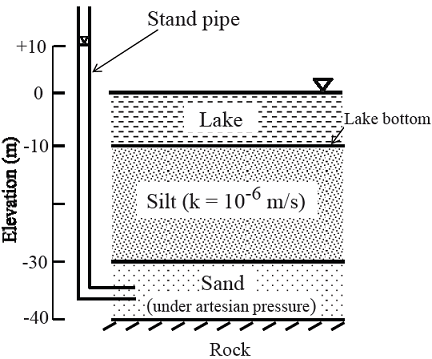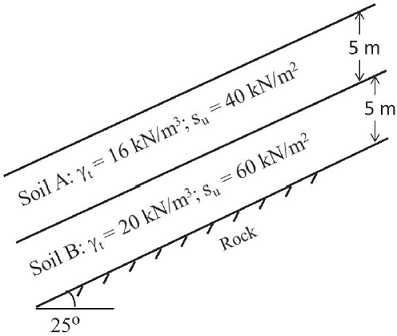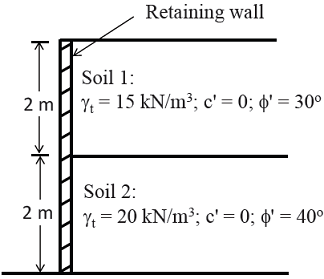GATE 2017-2018 :: GATE Civil
-
Beam PQRS has internal hings in spans PQ and RS as shown. The beam may be subjected to a moving distributed vertical load of maximum intensity 4 kN/m of any length anywhere on the beam. The maximum absolute value of the shear force (in kN) that can occur due to this loading just to the right of support Q shall be:

- A rectangular concrete beam 250 mm wide and 600 mm deep is pre-stressed by means of 16 high tensile wires, each of 7 mm diameter, located at 200 mm from the bottom face of the beam at a given section. If the effective pre-stress in the wires is 700 MPa, what is the maximum sagging bending moment (in kNm) (correct to 1-decimal place) due to live load that this section of the beam can with stand without causing tensile stress at the bottom face of the beam? Neglect the effect of dead load of beam.______
-
The soil profile below a lake with water level at elevation = 0 m and lake bottom at elevation = -10 m is shown in the figure, where k is the permeability coefficient. A piezometer (stand pipe) installed in the sand layer shows a reading of +10 m elevation. Assume that the piezometric head is uniform in the sand layer. The quantity of water (in m3/s) flowing into the lake from the sand layer through the silt layer per unit area of the lake bed is:

-
The soil profile above the rock surface for a 25o infinite slope is shown in the figure, where su is the undrained shear strength and Ï’t is total unit weight. The slip will occur at a depth of

-
Two different soil types (Soil 1 and Soil 2) are used as back fill behind a retaining wall as shown in the figure, where ϒt is total unit weight, and c' and φ' are effective cohesion and effective angle of shearing resistance. The resultant active earth force per unit length (in kN/m) acting on the wall is:

- A 2 km long pipe of 0.2 m diameter connects two reservoirs. The difference between water levels in the reservoirs is 8 m. The Darcy-Weisbach friction factor of the pipe is 0.04. Accounting for frictional, entry and exit losses, the velocity in the pipe (in m/s) is:
- The normal depth in a wide rectangular channel is increased by 10%. The percentage increase in the discharge in the channel is:
- The transplantation of rice requires 10 days and total depth of water required during transplantation is 48 cm. During transplantation, there is an effective rainfall (useful for irrigation) of 8 cm. The duty of irrigation water (in hectares/cumec) is:
- A settling tank in a water treatment plant is designed for a surface overflow rate of 30 m3/day.m2. Assume specific gravity of sediment particles = 2.65, density of water (Ï) = 1000 kg/m3, dynamic viscosity of water (μ) = 0.001 N.s/m2, and Stokes' law is valid. The approximate minimum size of particles that would be completely removed is:
- A student began experiment for determination of 5-day, 20°C BOD on Monday. Since the 5th day fell on Saturday, the final DO readings were taken on next Monday. On calculation, BOD (i.e. 7 day, 20°C) was found to be 150 mg/L. What would be the 5-day, 20°C BOD (in mg/L)? Assume value of BOD rate constant (k) at standard temperature of 20°C as 0.23/day (base e). __________


 Whatsapp
Whatsapp
 Facebook
Facebook

